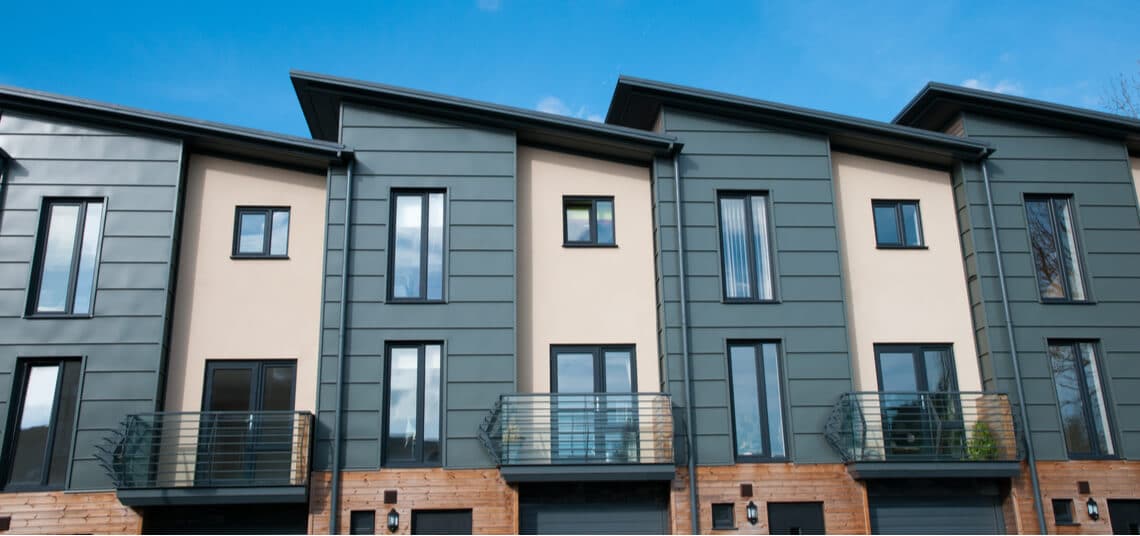Buying your dream home is… well, it’s the dream, isn’t it? But what happens when things don’t go to plan, and there’s a risk you could miss out on moving because of factors beyond your control, such as the chain breaking, struggling to sell your home or other unforeseen events? The answer might lie in a let-to-buy mortgage, which could give you more moving flexibility. What is a let-to-buy mortgage, though? That’s the purpose of this guide, which features everything you need to know about let-to-buy and if it’s the right move for you.
What is a let-to-buy mortgage?
A let-to-buy mortgage is when you rent out your current home and buy a new one to live in. It requires having two mortgages, one for the property you’re renting out and another for the home you move into.
While that might sound like a gamble, it’s constructed in a way that mitigates risk. You convert your existing mortgage into a buy-to-let one, enabling you to let the property on the rental market. Then you get a regular residential mortgage on your new property in the same way you would if you moved and sold your previous home. If everything goes to plan, the rental payments will cover the buy-to-let mortgage.
Why might I get a let-to-buy mortgage?
Most people get a let-to-buy mortgage if they struggle to sell their home, or for whatever reason, don’t wish to sell their current property but still want to move out. That might be due to relocation or other factors relating to your moving needs.
You may also be in a rush to move and don’t have the time required to list the home on the sales market and wait for offers to arrive. It may even be that you want to use the equity built up in your home to move to a new one yet still keep the current property as a long-term investment.
With a let-to-buy mortgage, you don’t sell your home and can instead place it on the lettings market. This is done with a buy-to-let mortgage, specifically designed to function for rental properties and allow you to rent out your home. Meanwhile, you move into your new place with a standard residential mortgage.
How do two mortgages work?
On paper, having two mortgages sounds confusing and costly. But in reality, it’s fairly straightforward, and you can even see you earn extra income as a result. The residential mortgage on your new home will be similar to your initial mortgage, with a repayment structure set over a term usually lasting 25 years.
But first you’ll need to remortgage your existing mortgage to a buy-to-let. This is where things can get a little tricky. Buy-to-let mortgages are typically offered interest-only, which means you don’t pay the actual amount borrowed and only cover the interest charge. At first, this might seem counterproductive. Yet, it’s a move usually taken to maximise rental income.
Let’s look at the difference between a residential mortgage and buy-to-let side by side:
| Residential | Buy-to-let | |
| Amount required | £150,000 | £150,000 |
| Monthly repayment (1.5%) | £512 | £180 |
| Rental income | £1,000 | £1,000 |
| Leftover amount after mortgage deduction | £488 | £820 |
Even though you stop paying the actual mortgage amount with an interest-only option, there is the possibility to increase your monthly income as the ratio between the rent received and mortgage payments increases.
Of course, you should only make financial commitments that you’re comfortable with. Some people don’t like the idea of having an interest-only mortgage, while others enjoy the extra income. If in doubt, consult with a financial advisor who can look at your financial situation and offer advice.
What is the lending criteria for let-to-buy?
Lending criteria for let-to-buy varies depending on the lender. At Molo, we offer let-to-buy mortgages and can convert your current one into a buy-to-let. You can find a list of our buy-to-let eligibility criteria , including individual and property requirements.
As a rule of thumb, the majority of lenders will:
- Offer a maximum loan to value (LTV) of 75%
- Want to see evidence of an onward purchase
- Need proof that your property isn’t listed for sale or has been sold subject to contract
- Require a maximum age of 70-75
- Need proof that the rental income will be higher than the mortgage amount by 145%.
Are there any downsides to let-to-buy?
If you bought a new home for£250,000, you would need to pay £10,000 instead of the typical £2,500 if you simply moved home. The difference is significant and worth taking into consideration. Let-to-buy rates tend to be higher than standard residential mortgages, so you could find yourself paying more interest. Lastly, owning two properties entails paying two sets of costs for repairs, looking after the home, etcetera.
Are there any other options?
If you’re in a rush to move, you could ask your lender to give you ‘consent to let’. This would see them agree to let you rent out your home while maintaining the same mortgage you have on the property. Without consent to let from the lender, you won’t be able to rent out the property if it has a residential mortgage.
Is let-to-buy a good idea?
For many, let-to-buy is a smart move as they can move into a new home and turn their current property into a rental investment. Others, however, don’t like the idea of owning two homes with two mortgages and the extra costs associated. Nor do they want to be a landlord and manage tenants living in their home.
Ultimately, it comes down to your needs as a homeowner and how much you want to move. A let-to-buy mortgage could help you move quickly without having to wait or worry about selling your home.
Final thoughts: letting to buy
As long as you’re happy taking on two mortgages, can comfortably manage the payments and embrace the idea of being a landlord, a let-to-buy mortgage can help you move home with fewer restrictions. However, it’s always best to seek advice from financial experts before making a definite decision.


